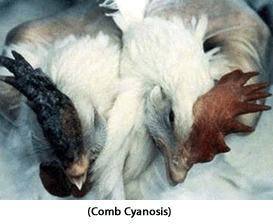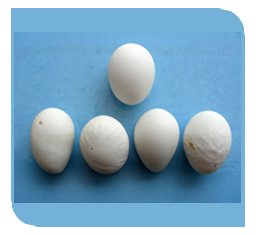

If nervous symptoms are involved, they tend to occur later in the outbreak, rather than earlier.

However, in the case of virulent Newcastle Disease (formerly known as Exotic Newcastle Disease), the virus is so deadly that many birds may die without showing any signs of disease. The virus tends to localize in the respiratory tract, and, generally, all affected birds show evidence of respiratory distress. Reduction in egg production and eggshell quality.Nervous disorders (twisting of the head and neck, circling, tremors, paralysis).Respiratory difficulty (gasping for air, coughing, sneezing).There are often three major symptoms present: Symptoms of Newcastle disease virus vary according to the age of the bird and the form of virus involved. Numerous strains have been isolated worldwide. Strains are designated according to species serotype or the type of birds from which the virus was isolated the geographical location of the isolation (state or country) and the reference number or name/year of the isolation.

Somewhat similar to avian influenza, chickens are very highly susceptible, while ducks and geese can be infected and show few or no clinical signs to the same strain of NDV. The pathogenicity of NDV strains varies greatly depending on the host, the type of virus, and how much virus the bird is exposed to. NDV is caused by a Paramyxoviridae virus and is named after Newcastle-on-Tyne, England, where it occurred in 1927. Newcastle disease virus (NDV) is an acute, rapidly spreading viral disease that affects domestic poultry (chickens and turkeys) and many other birds. economy through trade restrictions and lost export markets. Serious disease outbreaks are recognized as one of the poultry industry’s greatest vulnerabilities because they have the potential to impact not only small backyard flocks, but also the multi-billion dollar commercial poultry industry and even the entire U.S.


 0 kommentar(er)
0 kommentar(er)
